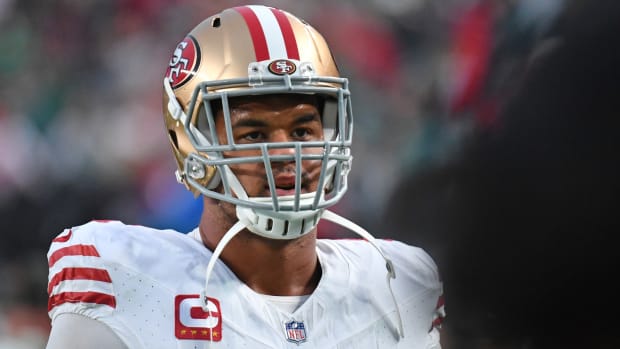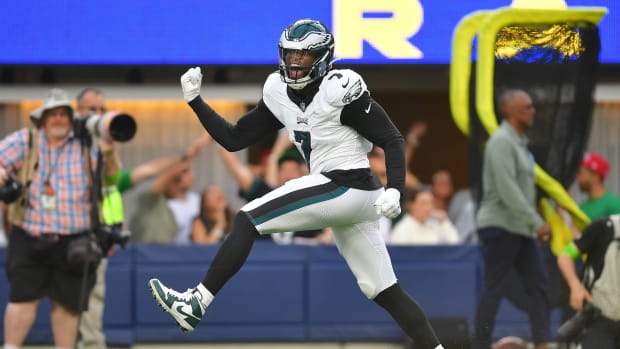The AFL’s Skinny Football
The MMQB presents NFL 95, a special project running through mid-July detailing 95 artifacts that tell the story of the NFL, as the league prepares to enter its 95th season. See the entire series here.
Beloved by the likes of Len Dawson and George Blanda, the upstart American Football League’s official game ball—the J5-V by Spalding—was only a quarter-inch skinnier and longer than “The Duke” produced by Wilson and used by the NFL, but it represented to players the key difference between the two leagues.
Dawson and Blanda led vertical passing games envied by young AFL fans such as Terry Bradshaw, who, according to Ed Gruver’s historical account The American Football League, cherished his Spalding J5-V Christmas gift from his father as a 9-year-old. The AFL’s early popularity among young people stemmed from the wide-open offensive play, but that had less to do with the ball and more to do with the anti-establishment disposition of the Foolish Club, the adopted nickname of the AFL’s eight owners who eventually merged with the NFL in 1970.
The most significant transformation for the football happened in 1875, when college rules dictated the ball be egg-shaped, for carrying, rather than spherical, as it had been for the first seven years since the College of New Jersey and Rutgers played the first game in 1869. In 1912 the all-important circumference was defined and reduced to 22 1/2 inches. Still, it took several decades until long-fingered pioneer quarterbacks like Sammy Baugh came along and redefined throwing accuracy. (At his first NFL practice in ’37, Baugh was challenged to hit a Washington receiver in the eye. Baugh asked, "Which eye?"). With the early success of ‘Slingin Sammy’ and a long line of others, the ball grew ever svelte, eventually reaching the 21 1/4 inches mandated by the NFL today.
— Robert Klemko






































